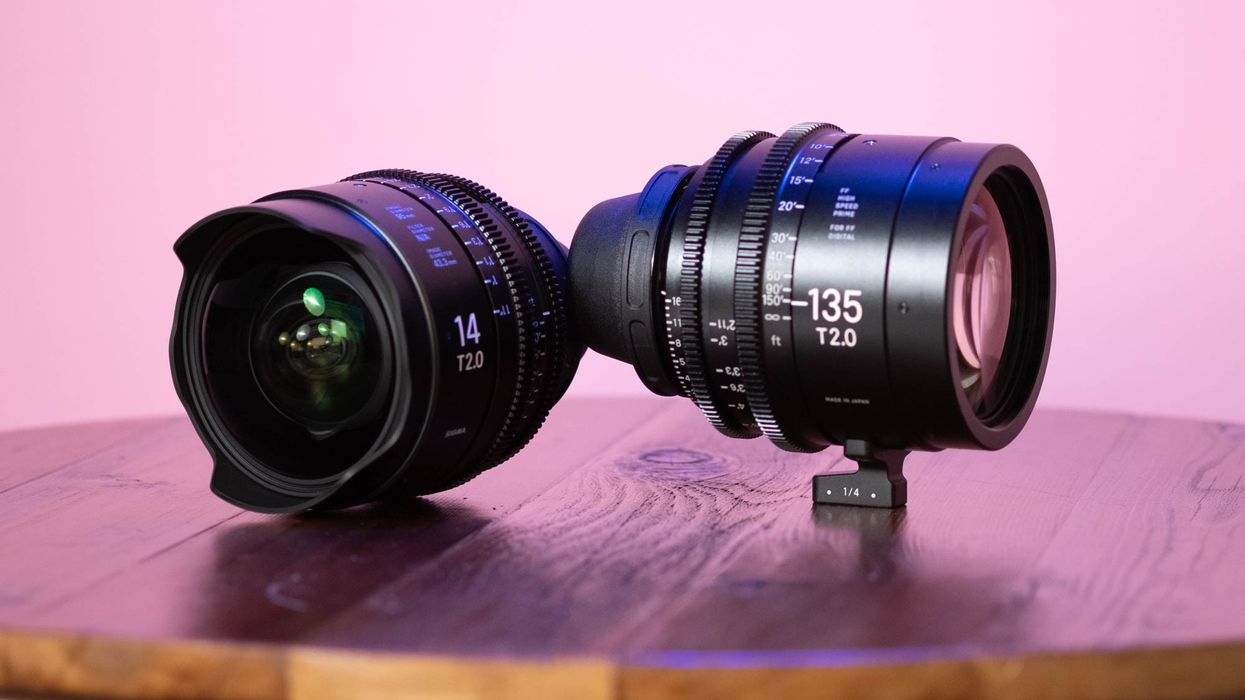Field Test: Try Out Two New Sigma Cine Primes - the 14mm and 135mm
Sigma keeps expanding its popular Cine Primes with a new 135mm and the ultra wide 14mm.

Sigma has made a name for itself in cinema glass faster than anyone would've thought. We walked away impressed with the Sigma Cine Zooms when we got to try them a few years back and they have been extremely popular with users. We kept hearing repeated praise from working cinematographers for the company's series of prime lenses, and we had a roundtable discussion with the DP and operators on Sneaky Pete for the SoC earlier this year that was full of praise for its performance despite its light weight (which especially made their steadicam operator happy).
We were excited to try out the full set, including the two newest lenses in the series (the ultra wide 14mm and the long 135mm) on a shoot recently, and we walked away very impressed.
We were able to work with the Sigma primes for a few weeks this summer with cinematographer Sarah Cawley onSalty Pirate (not to be confused with Sneaky Pete, the Amazon Show), with a special focus on the 135mm and the 14mm. The 135mm was particularly useful because we were a "long lens"-favoring show, and the 14mm was useful because it was beyond the normal range available to us with the Angenieux zooms we were using for A-camera.
Those zooms only opened up to a 2.8, so the primes were our main choice for all night and low light work, and they were also our go-to when occasionally expanding to a really wide field of view. Even on the larger 6K Dragon sensor we were working with, the 14mm was consistently impressive. Working in an office set (with banks of square windows), we were constantly shocked not just with how the lens looked in still images (with no bowing at all), but also by how pleasant it made pans and tilts feel, with practically no distortion at all, even on ultra close-up shots.
Same as with the cine zooms, the design and construction of these lenses feel top notch, with each lens in the series coming with its own optional lens support. This is actually exceptionally considerate on the part of Sigma, since it acknowledges that these lenses are just as likely to be on an Alexa LF (with its lens mount designed to handle the weight easily) as they are on a Sony A7III, where the smart move is to mount directly to the lens instead.
Those lens mounts even include thread holes for both 1/4-20 and 5/8" mounts.
We generally like to walk away from a review with at least a few "these are our frustrations" quibbles, but we don't really have many here. Creamy, smooth, yet sharp images? Check. Lightweight, consistent lens gearing, wide aperture, consistent performance through the line? Check. Amazingly full frame coverage, though admittedly not as large as some but still plenty to cover the Alexa LF? Check. Intercut well with Angenieux Anamorphics? Check.
At this price point, we really don't see anything that is offering the cost/benefit image quality of the Sigmas. We're excited to see the NiSi lenses, but we haven't yet, and it is a younger, smaller company, so we honestly don't know how consistency from lens-to-lens is going to be. Maybe we could say "Well, they don't open to a 1.4," but honestly, with modern sensors and lighting, how often are you working at a 1.4 these days?
While it's almost unfair to the focus puller, a modern puller working on a 55" monitor with a wireless follow focus should stand a chance. On a full frame sensor, a T1.4 gives such a shallow depth of field that pulling focus might be impossible. So, yes, if you want the absolute widest aperture available, you will go for another set of glass. But at T2 (and for this price), these are stunning lenses.

You can add both the 14mm and the 135mm to your existing Sigma set for right around $10K. If rumors are true, three more lenses are coming down the pike, filling in holes in the middle of the line.
Tech Specs (14mm):
- Covers Full-Frame 43.3mm image circle
- Available in PL, EF or E mounts
- T2 to T16 Aperture Range
- Geared Focus and Iris Control Rings
- 180° Focus Rotation
- 9-Blade Iris
- Glow in the Dark Lens Markings














